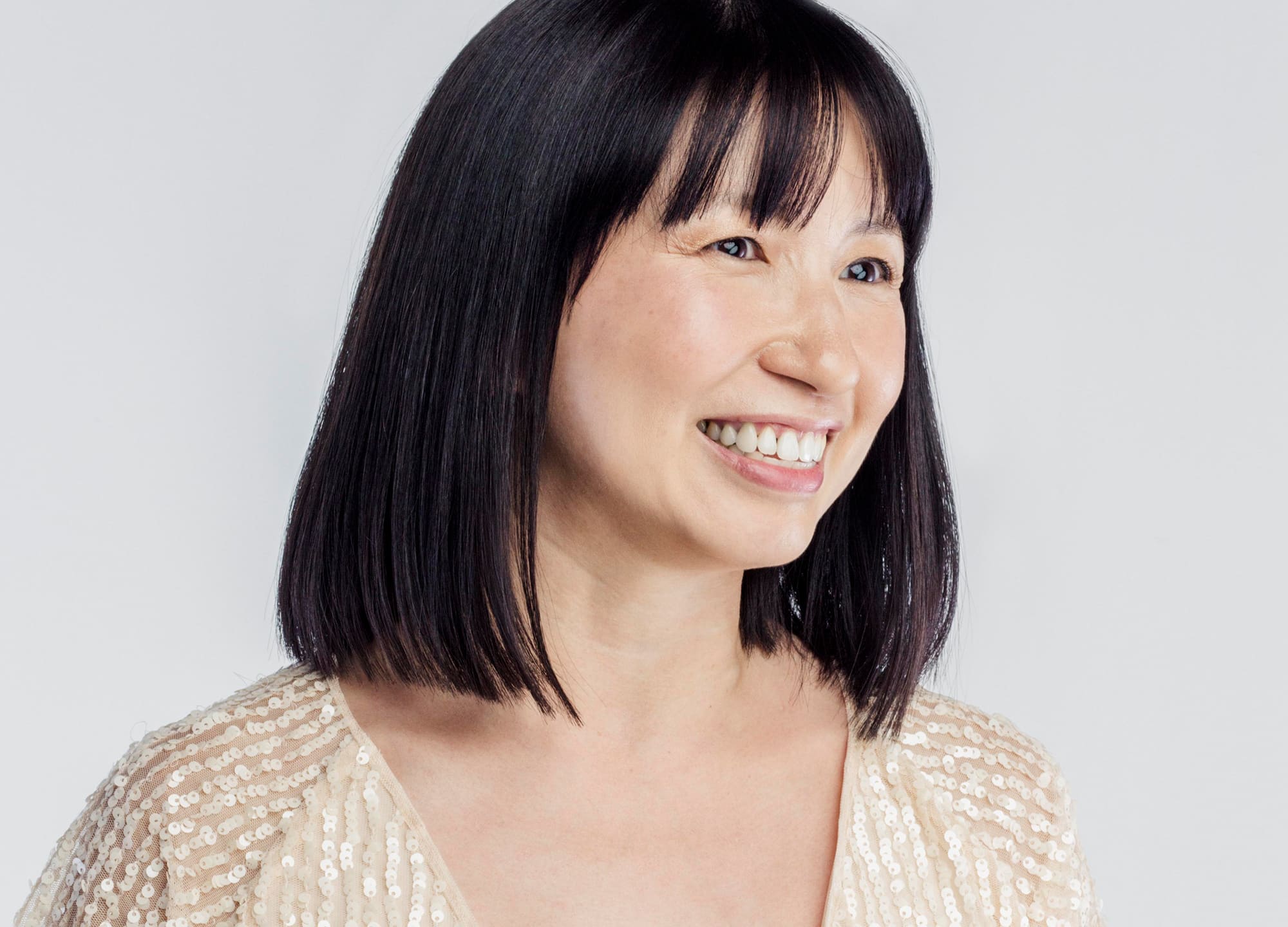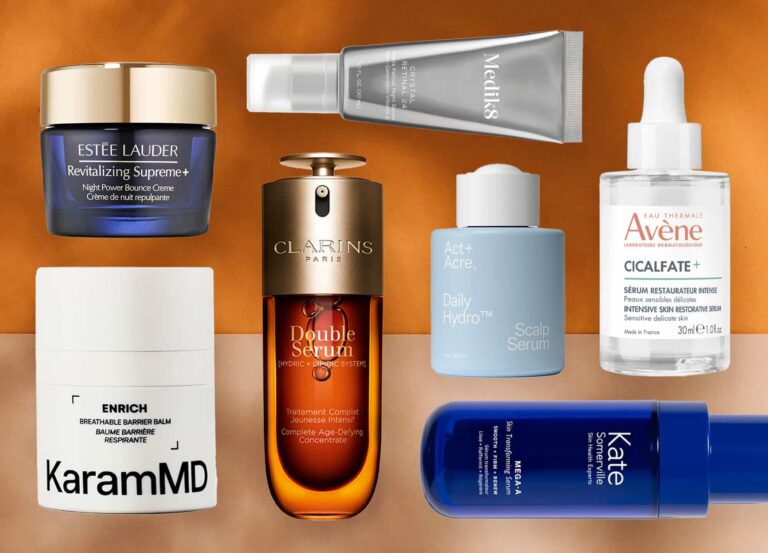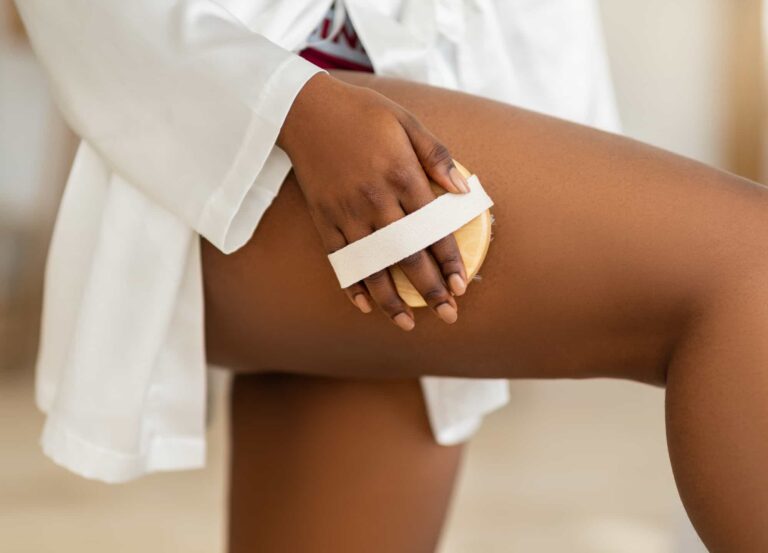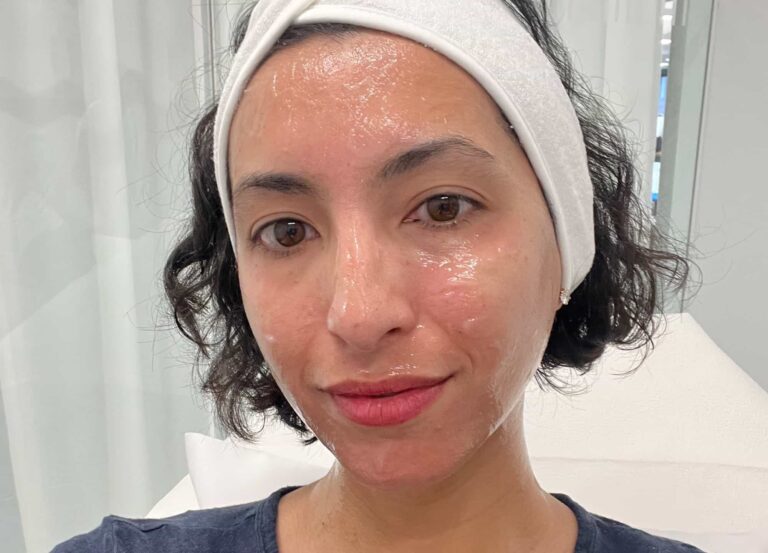Turning 40 doesn’t have the same social stigma as it once did. While society is still generally obsessed with youth, many successful women, from Jennifer Lopez to Jennifer Aniston, have all embraced getting older, speaking of the wisdom and confidence that came with it. (Plus, if you’ve seen Lopez in Hustlers, that should put an end to anyone’s fear of getting older.) However, there are still some things that accompany the fourth decade that are hard to ignore—for example, the effect aging can have on the skin.
In our youth, breakouts may have been the biggest problem. And while acne is still very much a concern for some adults, the 40s can come with a slew of other skin issues—whatever your skin type. So what exactly happens on a physiological level at that age? “By the time you hit your 40s, collagen production has slowed down, antioxidant defenses have declined, and the skin cannot protect itself as well as it should from the environment,” says New York City–based board-certified dermatologist Dr. Joshua Zeichner.
Dr. Manish Shah, a board-certified plastic surgeon in Denver, adds that after we turn 40, our bodies begin breaking down collagen much faster than they produce it. “This deficit in collagen content will affect the way your skin functions and looks. Collagen is essential to the connective tissue of the skin and gives your skin its firmness,” he says. “Elastin is another protein found throughout the skin, much like collagen. [It] gives skin its flexibility, and the decrease in these two proteins can lead the skin to show more signs of aging.”
Ahead, seven changes that can happen to your skin in your 40s, due to the decrease in collagen and elastin. The good news? There are some skin-care products, active ingredients, and good habits you can start practicing now, no matter which side of 40 you’re on.
Condition: fine lines develop or deepen
When we think of older skin, fine lines and wrinkles are the first concerns that come to mind, thanks to a loss in elasticity. Wrinkles are usually more noticeable in the areas of our face where there is more movement, like around the mouth and eyes (caused by smiling) or in the forehead.
How to treat it
The best skin-care routine is brimming with anti-aging ingredients. “In your 40s, you proactively can apply antioxidant serums in the morning and topical retinoids in the evening,” Dr. Zeichner says. “Retinoids help stimulate collagen, to strengthen the skin foundation and improve the appearance of fine lines and wrinkles.” Retinol, a form of vitamin A, is available over-the-counter in serums or creams that belong in your nighttime skin-care routine; just don’t forget to apply SPF during the day, as it can make skin sensitive to sunlight. Peptides can also be helpful, as certain kinds can help promote the production of new collagen and elastin.
When it comes to in-office treatments, Dr. Zeichner says fractionated resurfacing lasers, like Fraxel, can improve crepey skin and fine lines. “Neurotoxins, like Dysport and Botox, can improve lines caused by facial expressions, like the ‘eleven’ lines that develop between your eyebrows,” he adds.
Related: The In-Office Treatment I Got at Age 40 Gave Me Skin So Even, I Can Now Skip Foundation
Condition: dry skin gets more common
Even if you weren’t prone to dryness before, it can develop over time, as the skin barrier loses some essential components. “Dry skin can affect people of all ages—after a certain age, dry skin can become worse and help deepen wrinkles and fine lines,” Dr. Shah says. “As we age, the natural oils, fatty acids, and lipids in our skin decrease, making it easier for the skin to dry out and show signs of aging.”
How to treat it
You can start fighting this from the inside out, by making sure you’re drinking enough water, keeping yourself hydrated, and of course, applying a hydrating serum (with humectants like hyaluronic acid and glycerin) as well as a good night cream. “Apply a heavy moisturizer in the evening, to restore skin hydration while you sleep,” Dr. Zeichner advises.
Condition: dark spots pop up
Hello, hyperpigmentation. You may have loved having freckles when you were a kid, but age spots are an entirely different thing that you probably don’t want. As we get older, those cute freckles may turn into solar lentigines, aka age spots or sun spots, which are a result of sun damage. While skin cancers, like lentigo maligna melanoma, are a serious concern, freckles and solar lentigines are harmless. But if you aren’t happy with age spots, there are some potential solutions.
How to treat it
Chemical peels and laser treatments like Fraxel and Nd:YAG can treat dark spots. As for topicals, a vitamin C serum can help. “Antioxidants like vitamin C act as a cofactor for healthy collagen production, protect the skin against free radical damage, and brighten uneven skin tone and pigmentation,” Dr. Zeichner says.
Also worth considering is niacinamide, or vitamin B3—it works to prevent the production of excess pigment, too. And, of course, proper sun protection with a broad-spectrum SPF is key to seeing results, since sun exposure is what contributes to these spots in the first place.
Condition: skin naturally looks duller
Rosy cheeks have always been a sign of youth, and dullness is an issue that can arise in our older years. “As we mature, our skin’s ability to replenish surface cells diminishes, resulting in a pileup of dead cells on the surface,” Dr. Shah says. “As a result, the natural rosy tone is obscured, and your complexion can become dull-looking, losing its natural lustrous, youthful tone.”
How to treat it
A quick solution to this is using a quality at-home exfoliator. “Exfoliating weekly is the most effective way to keep skin from looking dull,” says Dr. Shah. “Plus it’s easy and inexpensive.” He recommends physical exfoliators that have a finer granulated texture, like pearl powder and jojoba beads, which are biodegradable and come in a variety of sizes, or a stronger exfoliant made with pumice crystal, if you’re not struggling with dermatitis or other skin sensitivities. Also, consider chemical exfoliants like lactic or glycolic acids, which dissolve the glue that binds dead skin cells together and promote brightening.
“Many exfoliating formulas and gels have drying ingredients and alcohol, which can deplete the skin’s protective barrier—[it’s] best to avoid those,” Dr. Shah says. “There are also physical exfoliant tools that may come in handy, as the market has a variety of textures and materials, like bristles and rubber, to massage the face and clear the epidermis of dead skin and dirt.”
Condition: hollowness appears
“With age, we lose volume in the face, leading to drooping and hollowness,” Dr. Zeichner says. “The temples and under-eyes develop hollowness. The cheeks drop, leading to worsening of nasal labial folds and jowls.”
How to treat it
Your best bet? Injectable dermal fillers, such as Juvéderm, Sculptra, or Restylane, which can restore lost volume. Dr. Zeichner says that Sculptra is ideal for people with volume loss and those who have an extremely thin face. “It can be used throughout the face and is a great option for the temples,” he says, adding that it should not be used in the lips. “It works by stimulating collagen production from your own body, and results can last for many years.”
He says that Radiesse, which is a calcium-based filler, is a great option for deep placement along the bone, to give lift for areas like the cheeks. It gives immediate improvements but also stimulates collagen production in the long term, and it typically lasts up to two years. “Soft and flexible products, like Juvéderm Ultra or Restylane Refyne, are great for use in the nasal labial folds because they can help plump without becoming firm or noticeable under the skin,” Dr. Zeichner says. “For people with deeper lines, where more robust filler is necessary, Juvéderm Ultra Plus or Restylane Defyne are good options. They are slightly more robust than the Ultra and the Refyne.”
For cheeks, Dr. Zeichner prefers a product that has strong lifting properties, like Restylane Lyft, Voluma, and Radiesse, which are long-lasting. “For the temples, many different products can be used. Sculptra helps build collagen from your own body. Restylane and Juvéderm products are also commonly used,” he says.
Related: 8 Ways to Get Rid of Under-Eye Circles—From Makeup to Medical Treatments
Condition: skin texture changes
Dr. Shah says that if we don’t cleanse and moisturize our skin properly when we’re younger, the texture of our skin can start to lose its smoothness. “In our 40s, the issue becomes more common. Decreases in the production of elastic tissue [elastin] in the skin with age cause the skin to hang loosely,” he says. This change in texture occurs around the eye area, too, which can make dark circles and puffiness around the eyes more prominent.
How to treat it
To help improve texture, there are various things you can try. Chemical peels are an in-office exfoliation treatment that uses chemicals to penetrate deep into the skin, prompting the outer layers to shed and resulting in accelerated skin cell turnover and fresh, new skin. There are different types of peels—superficial, medium, or deep—with different types of acids, from lactic to salicylic acids, and the choice depends on how serious your skin issues are.
When it comes to an at-home treatment, you can add a retinol to your skin-care routine. Not only can retinols help with skin tone and texture, but they also can reduce other signs of aging, like fine lines and wrinkles. Plus, they’re easily found at the drugstore. Additionally, consider a dedicated eye cream and cleanse eye makeup with a gentle makeup remover.
Condition: fragility increases
In our 40s, our skin essentially becomes weaker. “Skin becomes more fragile. This is caused by a flattening of the area where the epidermis and dermis come together,” Dr. Shah says. This means that the outer layers of the skin get thinner and lose a lot of the lipid production that keeps skin healthy and smooth. These lipids are called ceramides. “Production decreases starting in your 20s—and by 40, your epidermis, if left without a regimen that addresses that loss in ceramides, can thin and become more fragile as the years go on,” he explains.
How to treat it
This skin change might also mean becoming more sensitive to certain ingredients, which can cause irritation or an allergic reaction. Dr. Zeichner says that you have to be cautious when using potentially irritating ingredients, like retinol or hydroxy acids. Skin allergies or irritation may have a sudden onset, occurring after the very first application of a particular product, whereas allergic reactions typically develop after one or more applications.
“The immune system becomes sensitized to a specific ingredient and later reacts when it is re-exposed,” he says. “If you have sensitive skin, look for products that are labeled as fragrance-free. Fragrances are the major culprit [with] skin allergies. If your skin is very reactive, visit your dermatologist for a treatment called patch testing, [which] can help identify a particular ingredient that you are allergic to. Dyes and preservatives are two other common causes of skin allergies.” Pay attention to how your skin reacts—you might have to switch your cleanser to something more gentle or simplify your skin-care routine.
Bottom line
If you don’t have sensitive skin, there’s a lot you can do to improve your complexion. Dr. Shah says that some of the in-office, derm-approved treatments to consider are dermabrasion, laser treatments like laser skin resurfacing, and microneedling. “At home, the best strategy is preventive—moisturizing, exfoliating, hydrating with serums,” he says. As previously mentioned, a vitamin C serum can help with hyperpigmentation as well as brighten the skin and protect it from environmental damage. You can also incorporate AHAs (alpha-hydroxy acids) to help treat sun damage and improve texture.
But even with all the changes, doctors warn against one thing: going overboard when treating your skin. Dr. Zeichner says this is a big mistake people in their 40s make, especially those who never took much care of their skin when they were younger. He typically doesn’t have patients apply more than two products during both morning and evening routines. The morning, he says, is about prevention of sun damage, and he usually recommends an antioxidant plus a sunscreen lotion. The American Academy of Dermatology recommends a minimum of SPF 30.
On the other hand, he says the evening is a time of rest and repair, and he typically recommends a face moisturizer and a topical retinoid—not to mention a face wash. “Stick to simple routines and do not overapply multiple products,” he says. “This inevitably leads to more irritation and [more] harm to the skin than good.”











